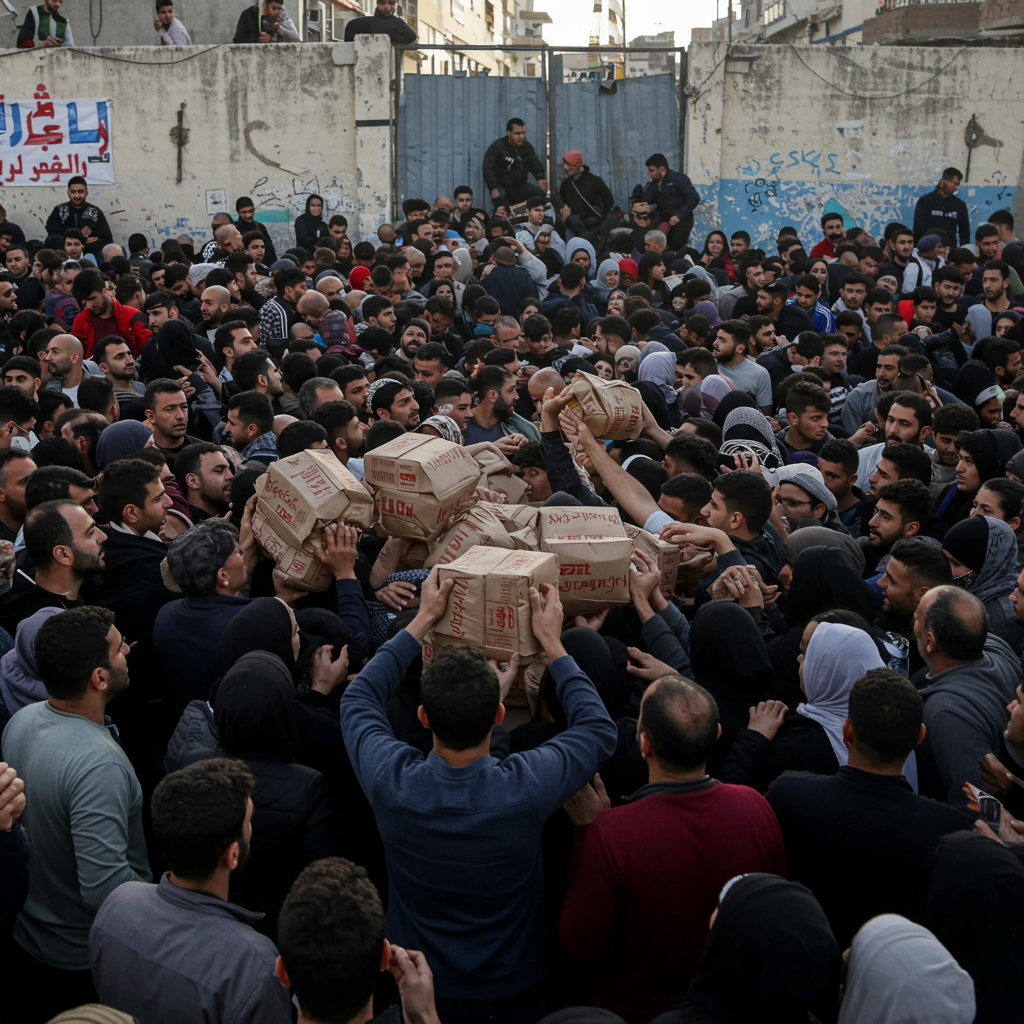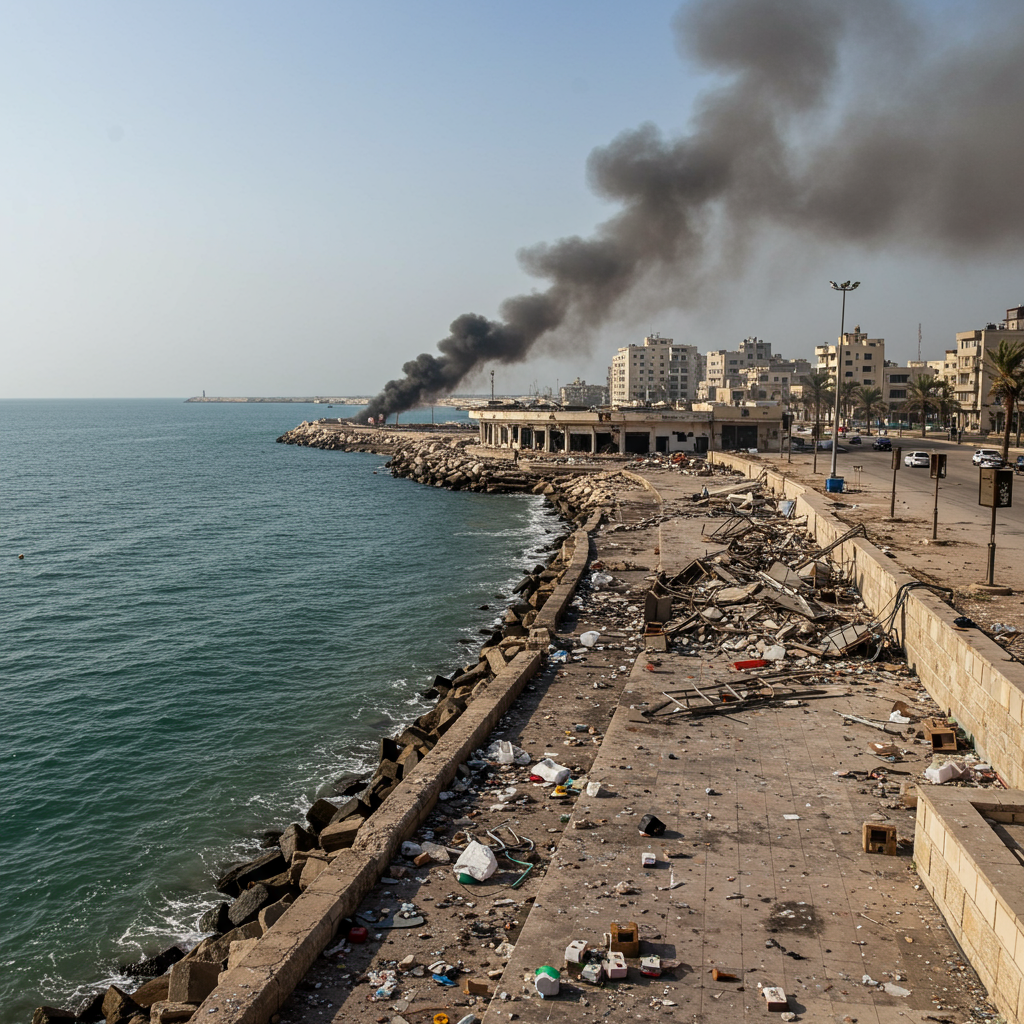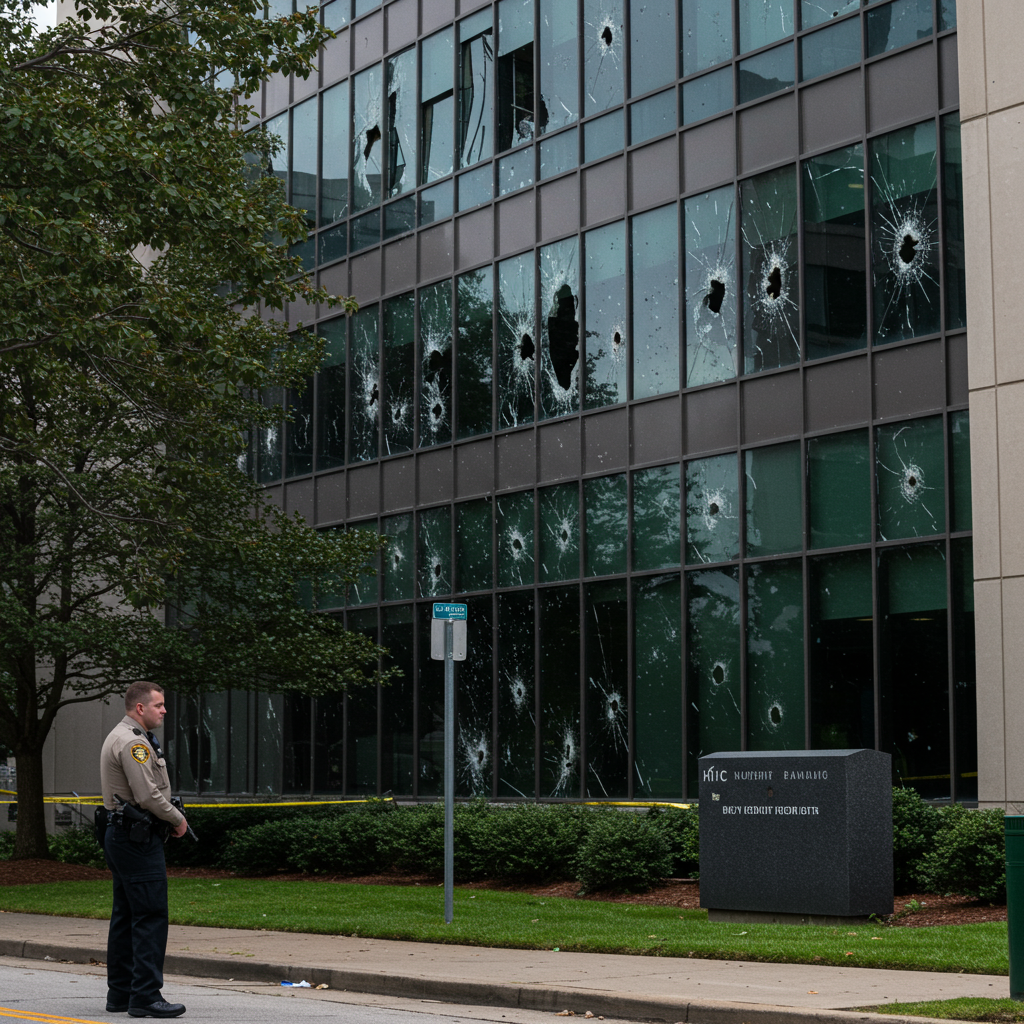Securing enough food to survive in Gaza has become a life-threatening ordeal, forcing hungry residents into perilous journeys fraught with danger. A firsthand account from journalist Anas Baba reveals the desperate reality of seeking aid at newly established distribution points, highlighting the extreme risks involved in obtaining basic necessities. This report details a terrifying quest for food where the simple act of survival can lead to injury or death.
The humanitarian crisis in Gaza is marked by severe hunger and widespread malnutrition. Years of conflict and stringent restrictions on food entry have pushed the population to the brink of starvation. People exhibit visible signs of weakness, often needing support to walk and sometimes collapsing in the streets. The scarcity has driven market prices for staples to unimaginable heights; two pounds of potatoes, for instance, could cost around $100. Desperate families resort to boiling watermelon rinds or pickling spoiled vegetables just to have something to eat. After nearly two years of rationing and losing a third of his body weight, securing even a week’s worth of food became a terrifying necessity for the journalist reporting this story.
Undertaking a Perilous Journey for Sustenance
Facing dwindling personal supplies, the journalist and his cousin decided to attempt accessing food from a site run by the Gaza Humanitarian Foundation (GHF). This organization, reportedly supported by the U.S. and Israel, operates sites intended to distribute aid, but they have become synonymous with danger. The journey requires walking for hours, often under cover of darkness, carrying only minimal supplies like water and a basic first aid kit. The breakdown of civil order due to intense hunger means many attempting the trip also carry knives for protection against robbers who prey on those returning with aid parcels.
The distribution points are situated near sensitive areas, including the Israeli military’s Netzarim corridor, often considered a no-go zone for Palestinians. Approaching these sites carries the inherent risk of being perceived as a threat. Compounding the danger is the GHF’s unpredictable operating schedule; sites may open briefly at any hour, sometimes only for minutes, creating massive, desperate crowds who wait for hours or days for a chance to access supplies. Those who manage to get to the front first stand the best chance of obtaining food before it vanishes, leading to dangerous surges.
A Deadly Rush in the Darkness
On the night of June 23, 2025, after hours of waiting, a rumor of a GHF site opening sparked a chaotic rush. Cars, motorcycles, and thousands of people surged forward through the darkness towards the distribution area. The rush itself was hazardous, resulting in some individuals being crushed under vehicles. However, upon nearing the site, the journalist discovered an Israeli tank was still present, indicating the site was not yet operational.
The sudden presence of the tank caused the crowd to retreat. As they did, the tank reportedly opened fire. The journalist and others dropped to the ground, hearing gunshots and the screams of the injured and dying. People cried out names of friends and brothers who had been hit. The Israeli military later stated they had received reports of injuries from IDF fire in the area and were reviewing details, noting that people had gathered near their troops. An Israeli newspaper, Haaretz, cited anonymous soldiers alleging orders to deliberately fire on unarmed crowds, an accusation denied by Israeli leaders and not independently verified.
The Chaotic Scene Inside the Site
Around 2 a.m. on June 24, 2025, the gunfire ceased, interpreted by the desperate crowd as a signal that the site was finally open. Pushing forward, the journalist ran alongside others towards the distribution point, navigating around fallen bodies in the darkness. The scene inside was one of utter pandemonium, described as a “human blender.” Thousands tore down surrounding fences and surged over wooden pallets holding food boxes, fighting each other fiercely for supplies.
Law and order had completely dissolved, replaced by what was witnessed as the “law of the jungle.” Amidst the chaos, a woman fiercely guarded her food and young son, holding a knife in each hand and screaming at anyone who came near. While GHF states its system aims to prevent Hamas control over aid flow, the journalist observed individuals he believed were affiliated with Hamas also taking food. This current free-for-all stands in stark contrast to previous aid distribution methods, where UN agencies would notify individuals by text message, allowing people to queue for hours in an orderly fashion to receive their share.
Guarded and Restricted Access
While documenting the chaotic scene inside the site with his phone, the journalist noticed green laser dots targeting his forehead. Private armed U.S. contractors, employed to guard the site, were aiming their weapons at him. A voice announced over a loudspeaker, in English, that filming was prohibited.
The Gaza Humanitarian Foundation, in a response to reporting on these events, acknowledged that the unpredictable timing of site openings could expose Palestinians to military fire but stated this approach was necessary to prevent dangerous crowd surges. GHF asserted it had urged the Israeli military to improve safe access routes and signage, which the military said it had done. GHF also claimed it was impossible to fully screen for Hamas members but was preventing the group from controlling aid distribution. The restriction on filming contractors, GHF stated, was due to online threats they had received. GHF also alleged that Hamas militants have both killed and threatened Palestinians working with the foundation and those attempting to reach GHF sites, citing a grenade attack that injured two U.S. contractors at another location.
The Dangerous Return Journey
Securing food is only part of the challenge; escaping the distribution site with any provisions is equally perilous. After grabbing torn bags of supplies mixed with sand, the journalist helped his cousin, who had been trampled by the exiting crowd. As they walked away from the site through the streets, they were stopped by four masked individuals wielding large knives. These thieves demanded half of their hard-won food.
When the journalist attempted to negotiate, offering a smaller amount, one of the masked men brandished his knife more aggressively. Faced with the threat of violence, they threw two bags of food at the thieves and ran. Despite the harrowing experience and the forced surrender of some supplies, the journalist managed to bring back food for his relatives, leaving him with enough for himself for about a week and a half, eating just one meal per day.
The Tragic Toll and Stark Reality
Hours after his journey, at 4:30 a.m., the journalist visited Al-Awda Hospital in northern Gaza. The scene was chaotic, filled with screaming and blood. Hospital officials reported that over 200 people had been wounded and 26 killed that very day outside the same GHF site he had visited. These casualties represent just one day’s toll at one site; similar deaths and injuries occur daily at GHF’s other locations. These sites are now the primary major food distribution points for Gaza’s population of approximately 2.1 million people.
Families whose loved ones had bravely risked the journey for food were now at the hospital, either tending to the wounded or grieving the dead. One young man screamed in agony with multiple bullet wounds. A mother wept over the body of her husband, who had been shot approaching the site – the sole provider for his family, he had successfully obtained food once before, only to return as a corpse on this attempt. In a heartbreaking testament to the dire circumstances, the hospital had run out of white shrouds. The deceased lay on the floor, covered not by traditional burial cloths, but by the very empty food sacks they had carried with them in the desperate hope of filling them with aid. Despite the constant threat of death and injury, hunger drives people to continue gambling with their lives, hoping to bring food back to their starving families.
Frequently Asked Questions
Why is getting food aid in Gaza so dangerous?
Obtaining food in Gaza is perilous due to severe hunger leading to desperation and lawlessness, aid sites being located near active military zones resulting in potential Israeli military fire, unpredictable distribution times causing dangerous crowd surges, and the threat of masked thieves preying on people returning with supplies. An NPR journalist witnessed violence, gunfire, and theft firsthand during a single trip.
What is the Gaza Humanitarian Foundation (GHF) and who supports it?
The Gaza Humanitarian Foundation (GHF) is a privately run organization operating food distribution sites in central Gaza. According to the article, GHF is supported by the United States and Israel. These sites were established as an alternative to previous aid distribution methods, with supporters claiming they aim to prevent groups like Hamas from diverting aid.
What are the risks associated with the new GHF food distribution system?
Risks include being killed or wounded by Israeli military fire while approaching the sites, being crushed or injured in chaotic crowd surges due to unpredictable opening times, facing violence from others fighting for limited food, and being robbed by thieves upon leaving the site. A group of 170 human rights and aid organizations have called for this system to end, and the UN has labeled these sites “death traps.”
An Ongoing Struggle for Survival
The account of seeking food in Gaza paints a grim picture of a population facing unimaginable challenges simply to survive. The journey is not merely an errand for groceries but a life-or-death gamble undertaken out of sheer necessity. The current aid distribution system, despite its stated goals, is contributing to significant casualties among the very people it is intended to help. As hunger persists, the desperate quest for food, marked by dangers like military fire, contractor restrictions, mob chaos, and theft, continues to define daily life for many in Gaza, tragically highlighting the urgent need for a safe and effective humanitarian response.
Word Count Check: 1149 words




